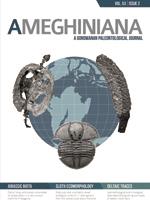Paleobiological integration proceeds from descriptive morphology and paleosynecological reconstruction. This integration is achieved through modeling of function, inference of faculties, performance and resource use to hypothesize about fundamental niche. Environmental information is then incorporated to discuss biological roles and realized niche. Herein, paleobiological integration of Santacrucian (early Miocene of Patagonia) sloths is analyzed as a study case. Santacrucian sloths comprise a diversity of approximately 11 genera ranging from 40 kg to 120 kg in body mass and characterized by being morphologically different from any living relatives. In this study, the realized niche of each taxon is reconstructed via integration of three paleoecological attributes: body size, dietary habits and substrate preference. An ecomorphological approach is applied using Principal Components Analysis to explore the correlation between postcranial linear dimensions and substrate preference together with classical functional indices. Integration of these results with previous studies indicates that the mid-sized Hapalops, Pelecyodon, Schismotherium and Analcimorphus (stem Megatherioidea) and Eucholoeops (Megalonychidae) are members of the arboreal folivore paleoguild. In contrast, the mylodonts Analcitherium and Nematherium, marked by their greater size, may have been semiarboreal consumers of leaves, fruits and tubers due to their digging capabilities. Prepotherium (Megatheriidae), the largest and most terrestrial Santacrucian sloth, was also a folivore. Only the latter three genera competed for trophic resources with other coexistent mammalian herbivores. Their body size, strength and claws made Santacrucian sloths subject of predation solely for the largest Santacrucian carnivores, borhyaenoids marsupials and phorusrhacoid birds. Finally, the absence of modern analogues of these heavy-sized arboreal and semiarboreal herbivore diversity is discussed.
How to translate text using browser tools
1 April 2016
Paleobiological Integration of Santacrucian Sloths (Early Miocene of Patagonia)
Néstor Toledo
ACCESS THE FULL ARTICLE

Ameghiniana
Vol. 53 • No. 2
April 2016
Vol. 53 • No. 2
April 2016
Folivora
Forma-función
Form-function
Paleoecología
Paleoecology
Xenarthra




